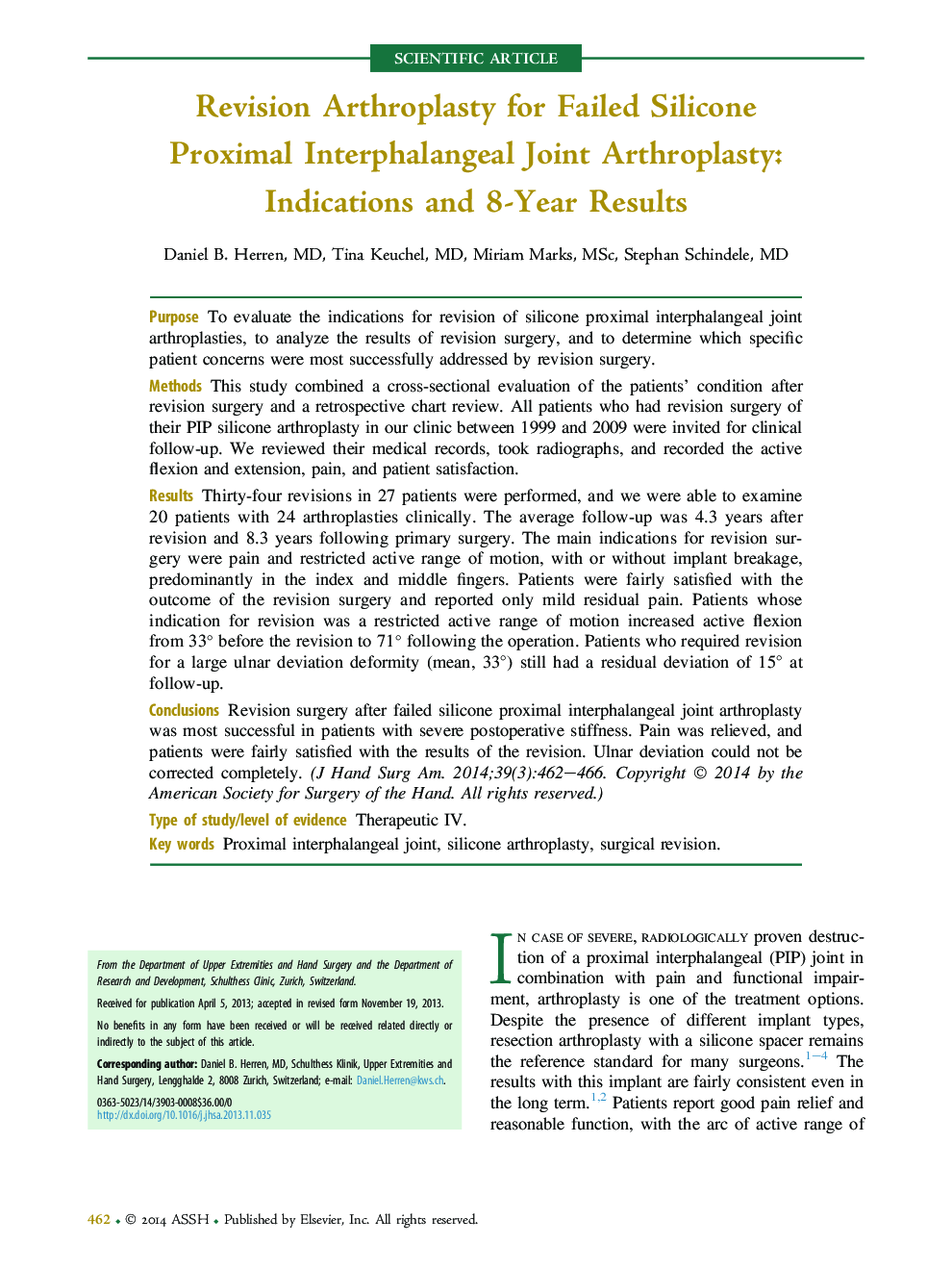| کد مقاله | کد نشریه | سال انتشار | مقاله انگلیسی | نسخه تمام متن |
|---|---|---|---|---|
| 4066673 | 1604372 | 2014 | 5 صفحه PDF | دانلود رایگان |
PurposeTo evaluate the indications for revision of silicone proximal interphalangeal joint arthroplasties, to analyze the results of revision surgery, and to determine which specific patient concerns were most successfully addressed by revision surgery.MethodsThis study combined a cross-sectional evaluation of the patients' condition after revision surgery and a retrospective chart review. All patients who had revision surgery of their PIP silicone arthroplasty in our clinic between 1999 and 2009 were invited for clinical follow-up. We reviewed their medical records, took radiographs, and recorded the active flexion and extension, pain, and patient satisfaction.ResultsThirty-four revisions in 27 patients were performed, and we were able to examine 20 patients with 24 arthroplasties clinically. The average follow-up was 4.3 years after revision and 8.3 years following primary surgery. The main indications for revision surgery were pain and restricted active range of motion, with or without implant breakage, predominantly in the index and middle fingers. Patients were fairly satisfied with the outcome of the revision surgery and reported only mild residual pain. Patients whose indication for revision was a restricted active range of motion increased active flexion from 33° before the revision to 71° following the operation. Patients who required revision for a large ulnar deviation deformity (mean, 33°) still had a residual deviation of 15° at follow-up.ConclusionsRevision surgery after failed silicone proximal interphalangeal joint arthroplasty was most successful in patients with severe postoperative stiffness. Pain was relieved, and patients were fairly satisfied with the results of the revision. Ulnar deviation could not be corrected completely.Type of study/level of evidenceTherapeutic IV.
Journal: The Journal of Hand Surgery - Volume 39, Issue 3, March 2014, Pages 462–466
